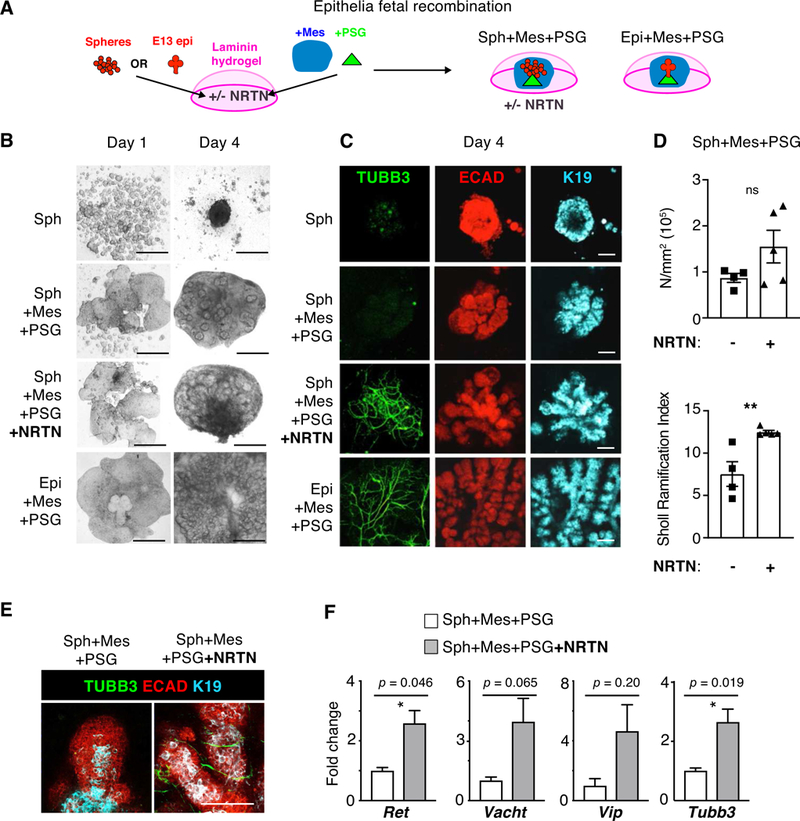Figure 4. Adult murine salispheres only undergo branching morphogenesis when innervated within a complex fetal microenvironment containing mesenchyme and parasympathetic nerves treated with NRTN.

(A) Cartoon depicting the recombination of adult mouse salispheres that were cultured in SM [FGF7] for 10 days prior to encapsulation in laminin-111 hydrogels. Recombination conditions include E13 parasympathetic ganglia (PSG), mesenchyme containing blood vessels (Mes), and/or recombinant NRTN. Murine E13 SMG epithelia were recombined as a positive control. (B) Phase images at days 1 and 4 after recombination. Scale bar, 0.5 mm. (C) Confocal 10μm sections of D4 recombined assays of (A), following staining for nerves (TUBB3, green), epithelia (ECAD – red), ducts (K19 - cyan) and/or nuclei (DAPI, blue). Scale bar, 100 μm. (D) Branching density (N/mm2) and index for degree of branching (Sholl Ramification Index) from Sholl Analysis [29] of D4 recombinations +/− NRTN. *, unpaired two-tailed t-test, P<0.05. (E) Magnified confocal 10μm sections showing D4 recombinations +/− NRTN stained for nerves (TUBB3, green) and epithelial ducts (ECAD - red, K19 - cyan). Scale bar, 100 μm. (F) Fold changes of gene expression of neuronal markers in D4 recombined mouse salispheres with or without NRTN, normalized to housekeeping gene Rps29 and Spheres+Mes+PSG. N=4 biological samples. Mean±SEM. *, unpaired two-tailed t-test, P<0.05.
